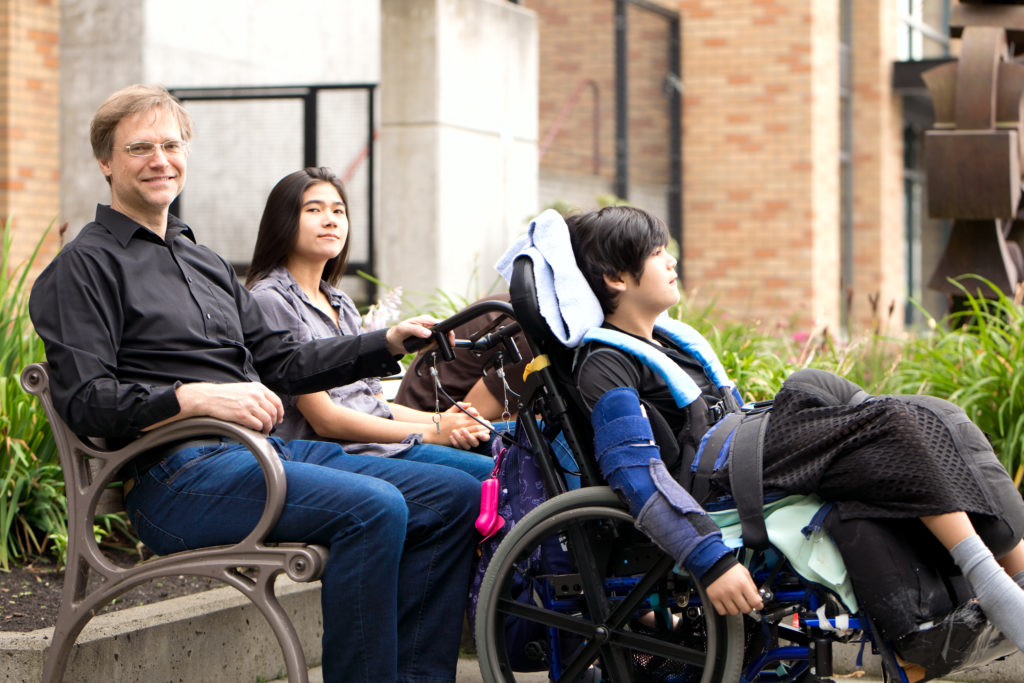
5 minute read
In 1974 Sue delivered two beautiful identical twin daughters. They were the “talk of the hospital,” she says. They were still talking days later, but for different reasons, when the girls had their first seizure in the nursery.
At three months, Kaylie and Kylie were diagnosed with spastic quadriplegic cerebral palsy. The doctor encouraged Sue to place the girls in an institution and forget they were born. Sue refused.
Her doctor predicted the girls wouldn’t live past the age of one. When they turned one, the forecast changed to three, then five, then eight as they grew older. Exasperated at the gloomy predictions, Sue said, “Look, the girls are going to be here as long as God wants them to be. I don’t want anybody telling me they aren’t going to make it because I am going to fight tooth and nail for their lives.” And so, she has, providing total care for the twins for 47 years.
Much attention has been given to children caring for their aging parents, far less to parents like Sue caring for children with disabilities for decades. In my 35-year career supporting people with intellectual and developmental disabilities (IDD), I have worked with hundreds of parents. For the last six years, I have been involved in the nonprofit initiative Orange Socks telling parent stories on social media. Although circumstances differ and disabilities vary, the parents’ stories have much in common.
Many parents of children with severe and profound disabilities want to care for them at home as long as possible. Doing so may require one of the parents (generally the mother) to quit their job and become a full-time caregiver. Home modifications might be needed, and in some cases, bedrooms and even living rooms become pseudo-hospital wards complete with respirators, GI tubes, and monitors. These parents can’t get babysitters, and vacations are difficult if their children are technology-dependent. Regardless, they soldier on determined to care for their children. As Sue said, “I was going to do whatever I had to do to take care of them.”
Children have better physical and mental health outcomes living at home than in institutions
In the 1950s, 60s, and early 70s, many physicians thought the best advice was to institutionalize a child with IDD for the “good of the child and the family.” Turns out that direction was wrong. The children have better physical and mental health outcomes living at home than in institutions, and despite the challenges, or maybe because of them, the family is better off too. When asked if they would do it again and keep their children at home, universally, these parents state they absolutely would.
Speaking personally (I have a 19-year-old daughter with IDD) and professionally, when parents discover their child has IDD, they go through the following three phases:
“Why me?”
This is the shock phase. Parents grieve for the child they thought they were going to have. Often, they are racked with thoughts of “why me” and wonder if they did something to cause it. Sometimes parents blame God, their pre-conception behavior, pollution, vaccines, or a host of other suspects. I was grief-stricken and cried all night after my daughter was born. Eventually, the why diminishes, giving way to the next phase.
“Why not me?”
After the guilt and blaming subside, many parents conclude, well, “why not me?” This is the head phase. I thought at the time, “I have the means and the education; who better to raise this child?” There is less emotion in this phase as parents steel themselves, marshaling forces and confronting their new family reality head-on. Parents become dogged advocates for their children. Many want answers and turn to their physician or “Doctor Google” to get them. Some parents want their neonatologist or pediatrician to foretell the future, then, these same parents take joy in proving the doctor wrong. I don’t know how many times I’ve heard, “The doctor said (insert child’s name) would never (walk, eat by mouth, go to school, etc.) but just look at them now. They were sure wrong.” The physician just cannot win. Although the advocacy continues the rest of the child’s life, the mechanization of this phase matures into the next stage, which is where the joy comes in.
“Thank God it’s me.”
This is the heart phase. Parents start recognizing the blessings the child is to the family. Of her now-deceased husband, Sue says, “He loved them dearly and wanted to help, but he didn’t realize the blessing they were to him until later on in life.” It took my wife about a week to reach this phase. I hate to admit it, but it took me four years to get it. This last phase is the real reason 77-year-old Sue continues to bathe, feed, diaper, dress, and care for Kaylie and Kylie as well as hundreds of parents just like her.

Leave a Reply